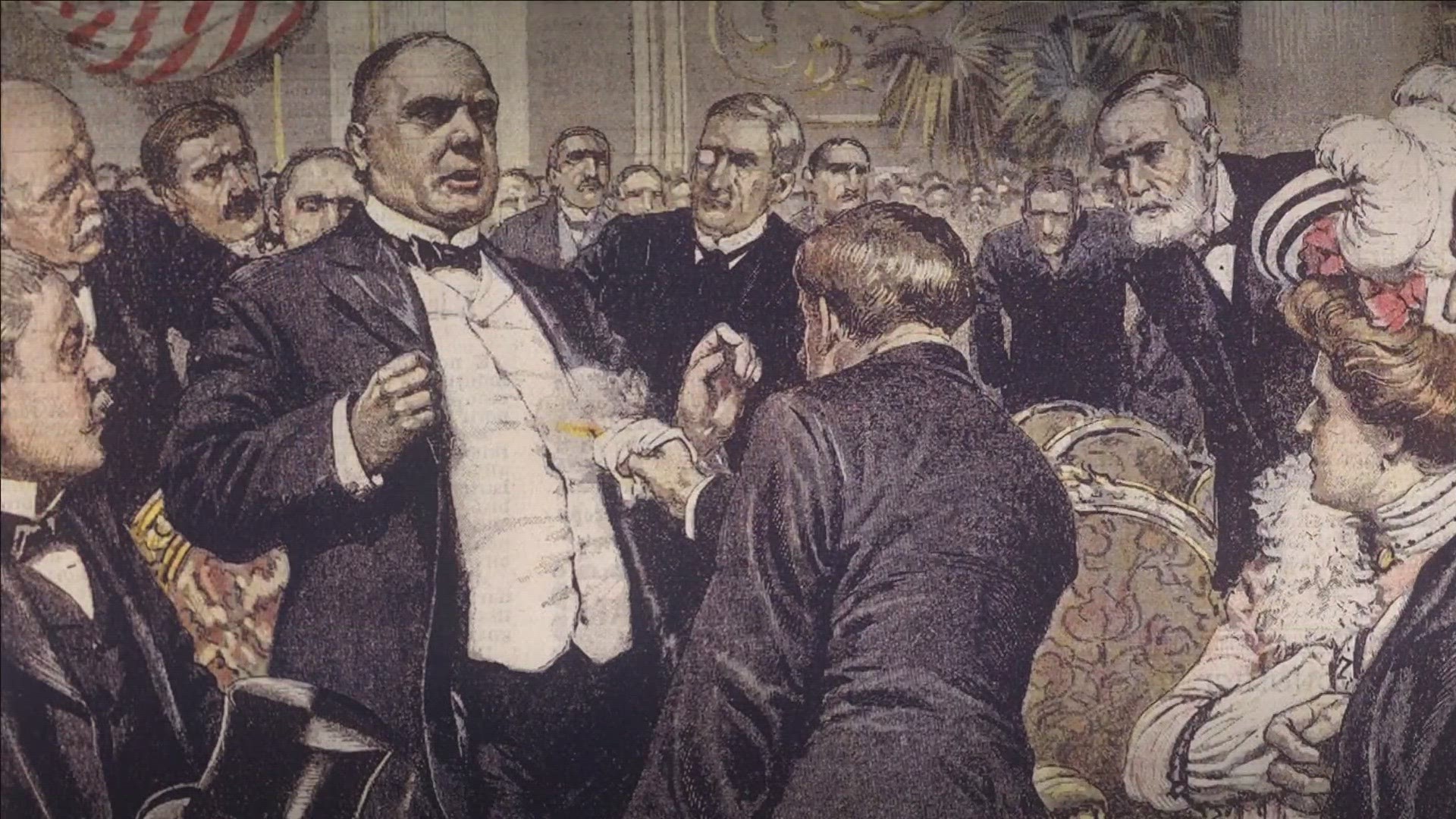BUFFALO, N.Y. — The McKinley Monument has sat in the heart of downtown Buffalo for over a century now.
Its spot, standing tall in the middle of Niagara Square, catches glimpses from many who drive by it every single day. But for a large portion of Buffalo’s population, its reason for existence remains a mystery.
2 On Your Side spent an afternoon speaking with Buffalo residents strolling through Niagara Square about their knowledge of the monument.
“I’ve never really thought about what it meant,” said Geoff Stewart, one Buffalo resident.
“Zero, nothing,” Buffalo resident Kris Cao said. “All I know is it’s a white stick that sticks right here in front of City Hall.”
Its origin stems from 122 years ago this month, when Buffalo joined an exclusive list with just two other cities — Washington, D.C. and Dallas, Texas — to become home to a presidential assassination.
But unlike the others, President William McKinley’s assassination in Buffalo remains somewhat under the radar, especially given the major implications it had on Buffalo’s history and American history as a whole.
The Pan-American Exposition: A deadly event
On Sept. 6, 1901, McKinley was visiting Buffalo for the Pan-American Exposition. The event was like a world’s fair where North American cities and countries were able to show off their greatest achievements at the time.
Like many presidents of his time, McKinley was not a fan of security, believing it got between the president and the people.
When hosting a meet and greet at the Temple of Music, he was unprotected.
“One of his defining features was being an advocate for American expansion and internationalism at the time, which also made him some enemies,” said Carole Emberton, a history professor at the University at Buffalo specializing in the post-Civil War era.
In line that day was Leon Czolgosz, an anarchist who may have suffered from mental illness. When it was his turn to shake McKinley’s hand, Czolgosz drew his gun under a handkerchief and shot the president in the abdomen.
Eight days later on Sept. 14, McKinley died of an infection.
Theodore Roosevelt was then brought into Buffalo and inaugurated, becoming the first president to have around-the-clock protection from the Secret Service — a direct result of McKinley’s death.
The lasting impacts in Buffalo
Unlike cities like D.C. and Dallas, which have turned Abraham Lincoln and JFK’s assassination sites into museums, all that sits at the site in Buffalo is a rock in the middle of what is now modern-day North Buffalo. That rock is where the Temple of Music once stood.
Emberton said her students at UB ask her all the time why McKinley’s assassination isn’t a bigger deal.
“I think the answer to that is complicated,” she said
Buffalo was a very different place in 1901. It was the eighth-largest city in the country and saw the Pan-Am Exposition as an opportunity to become the nation’s preeminent city. The events that took place on Sept. 6 were not what the city wanted to be remembered for. It was easier to forget.
“Folks are torn,” Emberton said. “They want to commemorate. They want to honor the memory of the president, but they also don't want to be stuck with a label of the assassin city.”
That label — according to Brian Hayden of Buffalo’s History Museum — is what kept Buffalo from broadly showcasing that part of its story, even vowing to keep the murder weapon in their possession a secret for 100 years.
However, times have changed.
The museum recently opening an exhibit dedicated to McKinley’s death featuring pictures from minutes before the assassination, Czolgosz’s .32 caliber revolver and the handkerchief that concealed it.
“This display has, without question, become one of the biggest draws at our museum,” Hayden said. “Hopefully, that education can continue and this community can really, truly understand just how how important those days in September of 1901 were.”
Those days have remained at the city’s center for over a century, as the monument sits in Niagara Square for all to see. But this newfound interest marks the first time the major moment in history has found its place in the city’s heart.

